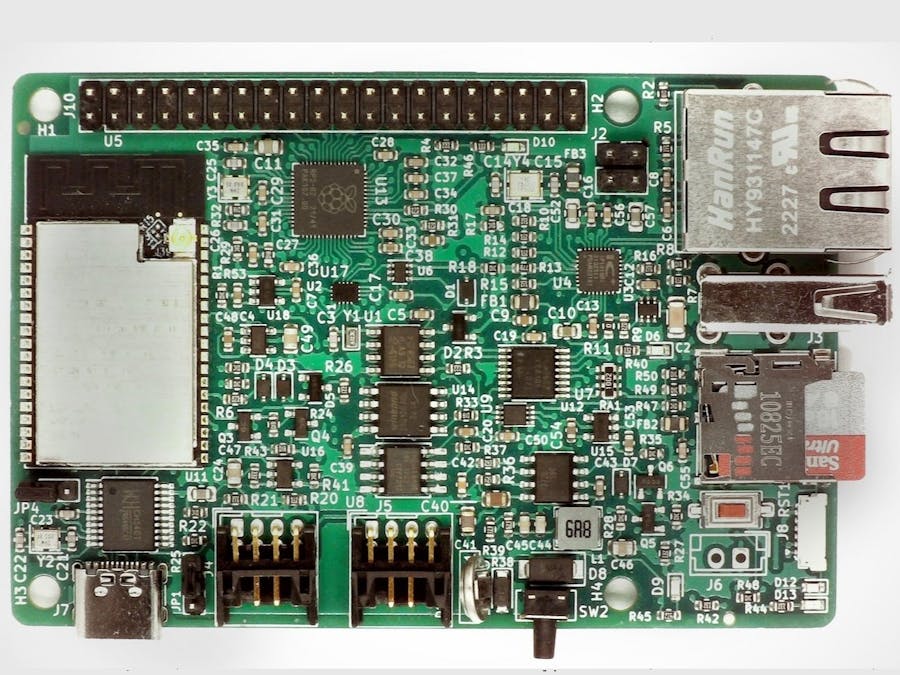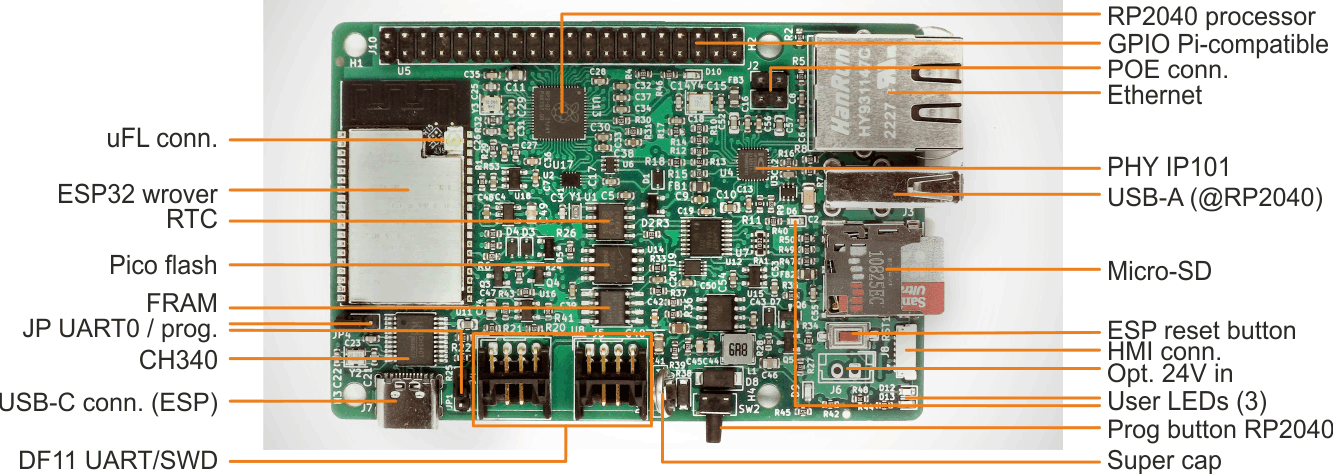We decided to build an alternative to the Raspberry Pi for our projects and products. As many others we were using the Raspberry Pi in our products, adding electronic payment to existing vending machines and coffee machines, in RFID solutions to read RFID tags in laundry and other application.
While it was easy to get a solution up and running in a short time, over time we got a lot of problems resulting from using the Pi. A key problem of the Pi's design is, to rely on an SD-card. The SD-cards are made for digital cameras, to write on them a few times. A Linux system like the Pi on the other hand, is writing permanent its log files and swap partition or to the SD-card. As a result, after some months the SD-card broke and the application crashed. High-end industrial SD-card lasted longer, but finally still broke.
An industrial controller simply can not base on a SD-card. The PI Operating system is also great for fast bring-up of a solution, but its more and more focused on media streaming then real-time tasks. It gets more and more overloaded with each new version. So we made the decision, to build a replacement, which is focused on high-reliability, but still enable the use of Raspberry Pi universum of add-ons, like HATs and enclosures. We choose the ESP32 dual core, 2x240MHz WROVER module with 8MB PSRAM and 16MB Flash. The EsPiFF, the
Esp32 in Raspberry PiForm Factor was born.
The EsPiFF open source project lives in https://github.com/MDCservice/EsPiFF
We started a crowd supply campaign https://www.crowdsupply.com/mdc-service-wittenburg-gmbh/espiff. Please subscribe to get the latest infos.
EsPiFF is an ESP32 in a Raspberry Pi 4 form factor, capable of utilizing nearly every Pi 4 enclosure and HAT. EsPiFF packs an additional punch with wired and wireless Ethernet, an SD card socket, and a RP2040 co-processor. Can’t find a Pi for that important project? EsPiFF is the rock solid, low-power Pi alternative you’ve been looking for.
EsPiff is particularly well suited to measurement, control, and automation projects where the current consumption and heat generation of a Pi—or the potential instability of its SD card—could be problematic.
Features & Specifications- ESP32-WROVER with 8 MB PSRAM and 16 MB Flash in a Raspberry Pi 4 form factor
- 2 KB of fast FRAM for permanent storage of process data. (Much faster then EEPROM, for key variables.)
- 8 Mbit state-of-the-art ISSI flash
- Unpopulated footprint for up to 512 Mbit state-of-the-art ISSI flash
- Wi-Fi connectivity (requires an external U.FL antenna)
- 10/100 wired Ethernet via IP101 PHY
- PoE header, to use Raspberry Pi PoE HATs. EsPiFF can be powered from a HAT or can power the HAT
- Micro SD card socket for storage
- Up to 3 UARTs
- USB Type-C connector on CH340 USB-UART for programming as well as power draw up to 5 V / 3 A for power-hungry HATs
- 40-pin Rasperry Pi header, compatible with all Raspberry Pi HATs
- RP2040 co-processor to emulate the Pi on the 40 pin connector, with 16 MB Flash
- External realtime clock, watchdog, and supervisor for high-availability, 24/7 applications
- On-board supercap to keep the realtime clock running for days, even without power. The supercap has, in contrast to a battery, a practically infinite lifetime
- USB-Host on the USB Type-A connector
- BOOT button for the RP2040, to switch between USB-Programming and USB-Host/Device
- ESP32 reset button and three user LEDs
- Unpopulated JTAG header for kernel developers
















Comments
Please log in or sign up to comment.